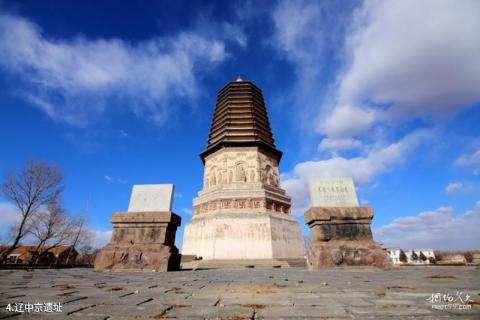
Introduction to the Liaozhongjing Site: The Liaozhongjing Site is on the alluvial plain on the north bank of the Laoha River in Ningcheng County, Inner Mongolia, 20 kilometers east of the Tianyi Station of the Chifeng-Yebaishou Railway. After the Liao-Song Chanyuan Alliance, in order to facilitate exchanges with the Central Plains, the Khitan nobles used the annual coins collected by the Northern Song Dynasty to recruit Han craftsmen who moved from the Yanyun area, and built a large-scale building in the 25th year of the Liao Dynasty (1007). The accompanying capital is Dadingfu City in Zhongjing. The remains of the city are still clearly visible. Except for the southeast corner, which was washed away by the Laoha River, part of the city wall is still 4 meters high. It consists of three parts: the outer city, the inner city and the inner city. It is 3500 meters long from north to south and 4200 meters wide from east to west, with a surrounding area of about 15 kilometers. The southern part of the outer city is the residential area of the Han people, with markets, residences, temples, government offices, post houses, etc. Today there are still two brick towers standing on the ground. The large tower in the southeast corner is commonly known as the Daming Tower. The inner city is the official office and garrison area. It was inhabited by Khitan nobles and had palaces, warehouses and other buildings. There are still ruins of the palace. In the Jin Dynasty, it was changed to Beijing Road Dadingfu, and in the Yuan Dynasty it was changed to Daning Road. In the early Ming Dynasty, Daning Guards was built here, but it was abandoned in the early Yongle years. It is now commonly known as "Da Ming City". It is of great scientific value in studying the feudalization process of the Khitan people and the economic and cultural exchanges with the Central Plains region. Archaeological excavations were conducted at the site from 1959 to 1960.
